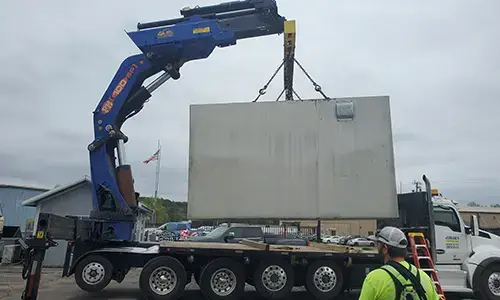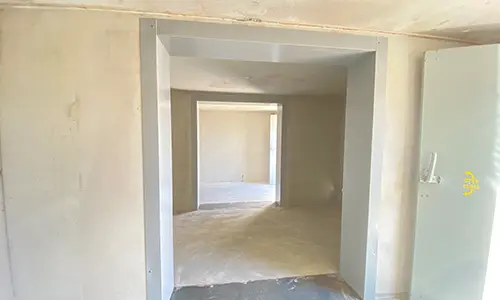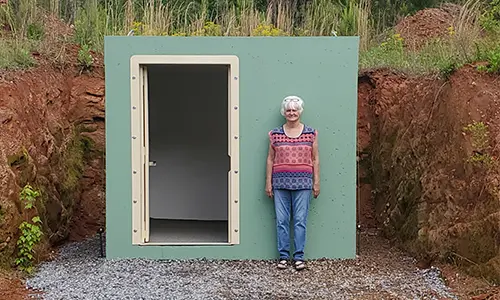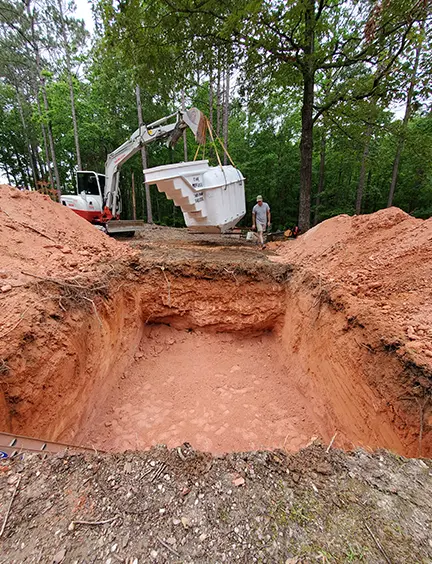The Real Purpose of a Storm Shelter in Alabama Homes


Understanding the True Purpose of a Storm Shelter
When severe weather strikes, every second counts. Tornadoes, high winds, and severe thunderstorms are no strangers to Alabama homeowners, where destruction can escalate within moments. The storm shelter purpose goes far beyond simply providing a place to hide: it’s about ensuring survival, comfort, and peace of mind during unpredictable natural disasters.
A residential storm shelter serves as a reinforced safe zone built to withstand extreme wind speeds and flying debris. Whether above ground or part of an underground storm shelter, their core mission is to safeguard human life. As Alabama’s tornado seasons grow more intense, families are realizing the importance of these structures more than ever.
Key benefits of installing a storm shelter include:
- Protection from deadly winds exceeding 200 mph
- Enhanced safety for children, elderly, and pets
- Compliance with FEMA-approved safety standards (fema.gov)
- Increased property value and resale confidence
A storm shelter isn’t a luxury—it’s a necessity. It’s a long-term investment in your family’s safety and security.
Why Storm Shelters Are Essential for Alabama Homes
Alabama’s weather patterns are unpredictable and often severe, making storm shelters a cornerstone of home safety. The state lies within Dixie Alley, a region known for its high tornado frequency and devastating storm activity. Understanding the storm shelter purpose can mean the difference between vulnerability and preparedness.
Alabama’s Storm Risks and Safety Needs
The topography and climate of Alabama create ideal conditions for tornadoes and strong thunderstorms. Spring and late fall bring increased storm frequency, requiring constant vigilance.
Without proper shelter, families face serious risks such as:
- Exposure to high-velocity debris
- Structural collapse of homes or garages
- Inaccessibility to emergency services during severe weather
Stay alert and stay informed through trusted resources like weather.gov and ready.gov.
How Storm Shelters Save Lives
Storm shelters are engineered to FEMA specifications, ensuring that even when your home is destroyed, the shelter remains intact. In tornado-prone zones, they can reduce fatalities by up to 85% when used correctly.
Shelters come in two main types:
- Underground Storm Shelters: Built below the surface for maximum debris protection.
- Above Ground Storm Shelters: Constructed with heavy steel and concrete, ideal for flood-prone or rocky areas.
Each type offers safety, but the best choice depends on your location, soil type, and accessibility needs.
Key Benefits of Storm Shelters in Alabama
Life-Saving Safety
A residential storm shelter provides ultimate protection during tornadoes and hurricanes. Built to meet strict storm shelter requirements, these structures can withstand the harshest weather conditions.
Peace of Mind
Knowing your family has a secure place to go during emergencies brings lasting confidence and comfort.
Increased Property Value
Homes with underground safe rooms or above-ground models often see higher resale value and attract safety-conscious buyers.
Durability and Storage
These shelters are durable, low-maintenance, and double as storage for emergency supplies like flashlights, first aid kits, and radios.
Storm shelters give Alabama residents not just safety—but assurance when facing nature’s fiercest storms.
How to Choose the Right Storm Shelter for Your Home
Choosing a storm shelter requires understanding your home’s structure, location, and budget. Here’s a step-by-step guide to make the right choice.
Step 1: Assess Your Risk and Local Regulations
Evaluate your area’s storm frequency and FEMA flood maps. Many Alabama counties have specific rebate programs for shelters that meet storm shelter design and compliance standards.
Step 2: Decide Between Above Ground and Underground
- Underground Shelters: Offer maximum protection from high winds and debris.
- Above Ground Shelters: Easier to access for elderly or disabled family members and ideal for flood-prone zones.
Explore options like the Unpainted Concrete Above-Ground Shelter for durability and reliability.
Step 3: Consider Size and Capacity
Determine how many people and pets will use the shelter. A standard residential storm shelter should accommodate at least five people with room for essentials.
Step 4: Choose a Trusted Alabama Installer
Work with experienced professionals like Lake Martin Storm Shelters, known for safe, certified installations. Always ask for:
- Proof of FEMA compliance
- Written warranties
- Verified customer testimonials
Step 5: Maintain and Inspect Regularly
Regular inspections ensure safety and compliance. Check seals, ventilation, and emergency supplies after each major storm.
Practical Applications of Storm Shelters in Alabama
Storm shelters serve multiple purposes beyond safety. Here are real-world examples of how Alabama homeowners use them effectively.
Case 1: Family Emergency Shelter
A Montgomery family installed an underground storm shelter in 2023. When a tornado warning struck, they sheltered for 45 minutes. The home sustained roof damage, but the family remained completely safe.
Case 2: Community Safety Space
In smaller towns like Wetumpka, Community Storm Shelters have become central hubs. They also serve as meeting points and emergency command posts during recovery efforts.
Case 3: Home Resale Value Boost
A Birmingham homeowner added an above-ground underground safe room, increasing property value by 12% and accelerating the home sale.
Each case proves that storm shelters not only save lives but also add practical and financial value.
Best Practices for Maintaining a Storm Shelter
To ensure your shelter performs when needed, follow these best practices:
- Keep emergency supplies updated
- Inspect after every major storm
- Ensure ventilation systems are clear
- Schedule annual professional inspections
- Educate family members on quick access procedures
These maintenance habits ensure your shelter meets ongoing storm shelter requirements and remains a reliable safe haven.
Protecting What Matters Most
The storm shelter purpose extends beyond structural safety—it’s about protecting life and maintaining peace of mind. In Alabama, where storms can strike without warning, having a shelter is one of the smartest investments a homeowner can make.
Your family’s safety is priceless. Whether you choose an above-ground or underground storm shelter, make sure it’s installed by professionals who understand local conditions. For more information on storm safety, visit alabamapublichealth.gov or read Storm Shelter vs Safe Room in Alabama.
When disaster strikes, your family deserves a place where safety is guaranteed.
Frequently Asked Questions
Q1: What is the main purpose of a storm shelter?
The primary storm shelter purpose is to protect people from life-threatening winds, flying debris, and collapsing structures during severe storms or tornadoes.
Q2: How much does a residential storm shelter cost in Alabama?
On average, storm shelter cost ranges from $4,000–$8,000 depending on size, material, and installation type. Custom underground storm shelter models may cost more.
Q3: Are above-ground storm shelters safe?
Yes. When built to FEMA and ICC standards, above-ground shelters provide equal protection to underground models.
Q4: Do storm shelters increase home value?
Absolutely. A professionally installed residential storm shelter can raise resale value by 5–15%, making it a wise investment.
Q5: How often should a storm shelter be inspected?
At least once a year, or after any major storm, to ensure all storm shelter design and safety features remain intact.




